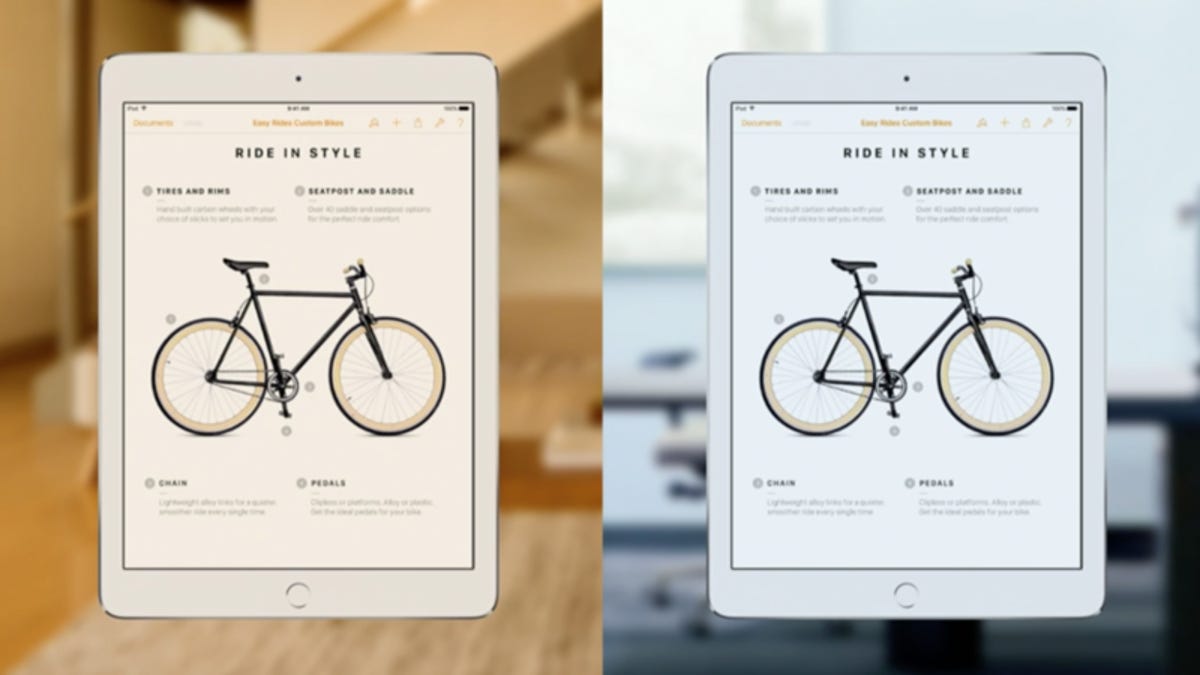Apple's True Tone display: What's the deal?
While there's a lot of colorful talk surrounding the iPad Pro 9.7-inch's new display, it's really all about achieving better contrast for reading.

From what we can tell, True Tone changes the white point of the iPad's display and adjusts brightness to compensate for the lighting in the environment.
Apple's just-launched 9.7-inch iPad Pro features a new display with a technology the company's dubbed True Tone, just like its white-balance-compensating camera flash system. As yet, we don't know much about True Tone, except that we should greet it with some healthy skepticism.
The basic physics of the issues that Apple's highlighting are real: display contrast decreases as the light around you gets brighter, and whites look different under different light sources, regardless of whether you're viewing them on a reflective (paper) or light-emitting display.
The
incorporates 4 sensors which measure the ambient light color and brightness, allowing the display to correct white point and illumination based on the lighting in your environment. Apple's stated goal is to render white's correctly under any light source, so, for example, when you're reading an e-book the page looks paper white. It's not a new idea: color calibration systems for desktop monitors have been offering it for years.But how important is it? Keep in mind that the human optical system is exceptionally well adapted to correcting for white point. Anything near-white we see, our brains compensate and make us think it's perfectly white -- that is, until we compare it to something whiter.
Related links
- Meet the 4-inch iPhone SE: Like the iPhone 6S, only smaller and cheaper (hands-on)
- Smaller, cheaper iPad Pro throws in a few new surprises (hands-on)
- All the March 21 Apple event coverage
A physically "better" white increases the perceived contrast of whatever we're viewing, though. So in theory, the adjusted white point should make reading text as well as drawing and sketching a lot more comfortable. But it's likely that the color-temperature adjustment will make only a marginal improvement -- unless for some reason the new display needs compensation a lot more than the older ones, which our testing shows deliver 6500K (the staple daylight-equivalent color temperature for working with photos) pretty consistently.
On the other hand, while the company didn't highlight it, dynamically adjusted brightness, coupled with the little Pro's low-reflectance display, might actually make the
readable in direct sunlight as well. That's far more important for comfort and usability than the white point.And as with most tech, how useful True Tone is really depends on how it's implemented. Since the
's shipping within the next couple of weeks, we'll be able to put it to the test pretty soon.See all of the news from Apple's March 21 event.

